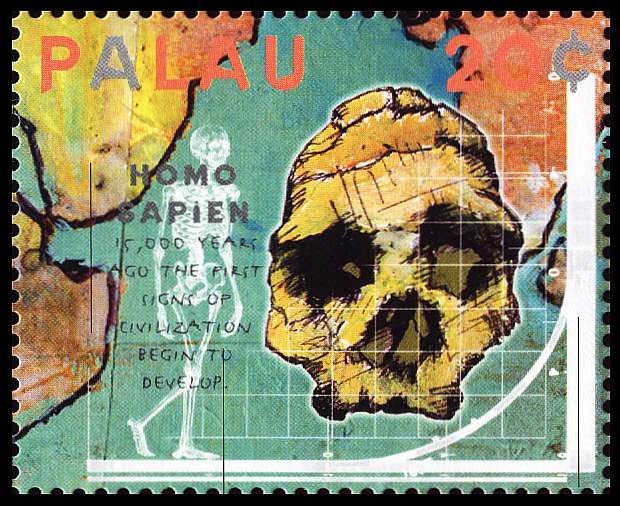Homo sapiens sapiens
Palau

Homo sapiens (Linnaeus, 1758)
Homo sapiens sapiens (Linnaeus, 1758)
The species to which you and all other living human beings on this planet belong is Homo sapiens. Anatomically, modern humans can generally be characterized by the lighter build of their skeletons compared to earlier humans. Modern humans also have very large brains, which vary in size from population to population and between males and females, but the average is around 1300 cc. Housing this enlarged brain has involved the reorganization of the skull into what is thought of as the "modern" appearance - a high vaulted cranium with a flat and near vertical forehead. The supraorbital torus is lost in most modern humans, and ridging above the orbits in general is very reduced. The widest part of the skull is high on the skull, as opposed to earlier Homo erectus and H. ergaster. The back of the skull lacks the transverse torus of H. erectus and the occipital bun of H. neanderthalensis.
The origin of modern Homo sapiens is not yet resolved. Two extreme scenarios have been proposed. According to the first, the distribution of anatomical traits in modern human populations in different regions was inherited from local populations of Homo erectus and intermediate "archaic" forms. This "Multiregional Hypothesis" states that all modern humans evolved in parallel from earlier populations in Africa, Europe and Asia, with some genetic intermixing among these regions. Support for this comes from the similarity of certain minor anatomical structures in modern human populations and preceding populations of Homo erectus in the same regions.
A different model proposes that a small, relatively isolated population of early humans evolved into modern Homo sapiens, and that this population succeeded in spreading across Africa, Europe, and Asia -- displacing and eventually replacing all other early human populations as they spread. In this scenario the variation among modern populations is a recent phenomenon. Part of the evidence to support this theory comes from molecular biology, especially studies of the diversity and mutation rate of nuclear DNA and mitochondrial DNA in living human cells.From these studies an approximate time of divergence from the common ancestor of all modern human populations can be calculated. This research has typically yielded dates around 200,000 years ago, too young for the "Multiregional Hypothesis." Molecular methods have also tended to point to an African origin for all modern humans, implying that the ancestral population of all living people migrated from Africa to other parts of the world -- thus the name of this interpretation: the "Out of Africa Hypothesis."
![]()
Cyprus
1994

Homo sapiens
Palau
Homo sapiens
Uzbekistan

Homo sapiens
![]()
